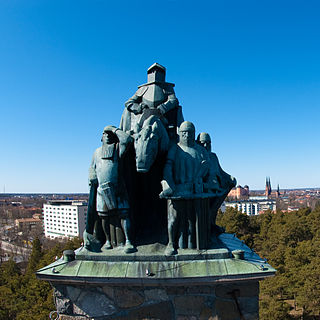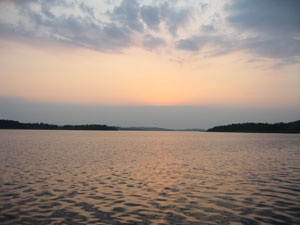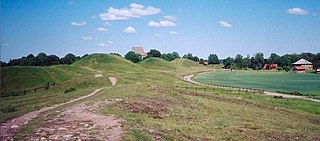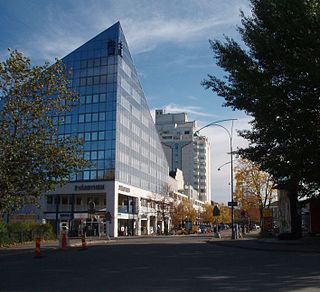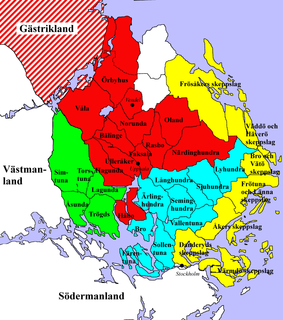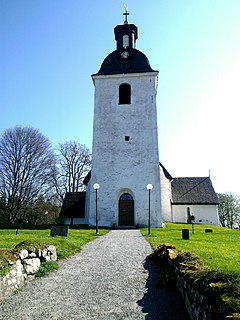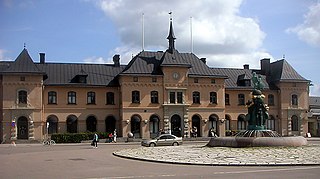
Uppsalaåsen is an esker ridge that winds its way across Uppland in Sweden. The ridge disappears and reappears, typically locally named.

An esker, eskar, eschar, or os, sometimes called an asar, osar, or serpent kame, is a long, winding ridge of stratified sand and gravel, examples of which occur in glaciated and formerly glaciated regions of Europe and North America. Eskers are frequently several kilometres long and, because of their peculiar uniform shape, are somewhat like railway embankments.

Uppland is a historical province or landskap on the eastern coast of Sweden, just north of Stockholm, the capital. It borders Södermanland, Västmanland and Gästrikland. It is also bounded by lake Mälaren and the Baltic sea. On the small uninhabited island of Märket in the Baltic, Uppland has a very short and unusually shaped land border with Åland, an autonomous province of Finland.

Sweden, officially the Kingdom of Sweden, is a Scandinavian Nordic country in Northern Europe. It borders Norway to the west and north and Finland to the east, and is connected to Denmark in the southwest by a bridge-tunnel across the Öresund, a strait at the Swedish-Danish border. At 450,295 square kilometres (173,860 sq mi), Sweden is the largest country in Northern Europe, the third-largest country in the European Union and the fifth largest country in Europe by area. Sweden has a total population of 10.2 million of which 2.4 million has a foreign background. It has a low population density of 22 inhabitants per square kilometre (57/sq mi). The highest concentration is in the southern half of the country.
Contents
In the south it begins on southernmost Södertörn and runs north-east, crossing Mälaren via Ekerö and Munsö and reaches the mainland at Bålsta. It then continues across the Uppland landscape and past Uppsala, eventually in the form of Billudden disappearing into the Gävle Bay. The ridge continues on the seafloor and curves northwest, appearing at Sandarna on the Hälsinge coast. [1] The ridge is estimated to be 250 kilometers long, with maximum width about 1 km, and height about 75 m. [2]
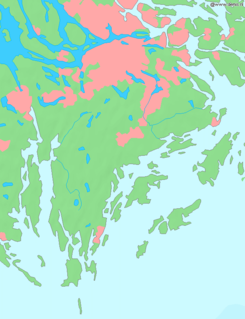
Södertörn is a roughly triangular peninsula and artificial island in eastern Södermanland, Sweden, which is bordered by:

Mälaren, historically referred to as Lake Malar in English, is the third-largest freshwater lake in Sweden. Its area is 1,140 km² and its greatest depth is 64 m. Mälaren spans 120 kilometers from east to west. The lake drains, from south-west to north-east, into the Baltic Sea through its natural outlets Norrström and Söderström and through the artificial Södertälje Canal and Hammarbyleden waterway. The easternmost bay of Mälaren, in central Stockholm, is called Riddarfjärden. The lake is located in Svealand and bounded by the provinces of Uppland, Södermanland, Närke, and Västmanland. The two largest islands in Mälaren are Selaön (91 km²) and Svartsjölandet (79 km²).

Ekerö is a locality and the seat of Ekerö Municipality in Stockholm County, Sweden, with 11,524 inhabitants in 2017. It is also an alternative name of the island Ekerön, on which the Ekerö urban area is situated.


